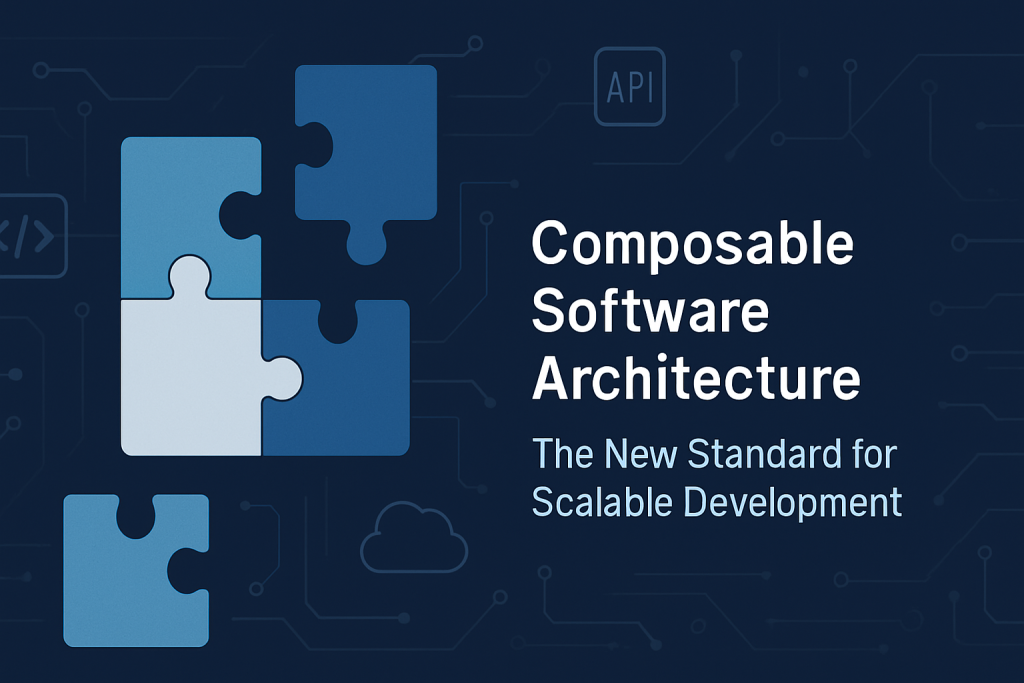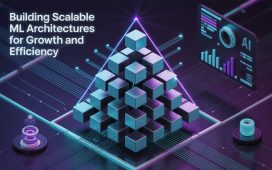A2Bookmarks India Social Bookmarking Website
Welcome to A2Bookmarks India, the premier social bookmarking platform tailored for individuals and businesses across India. Our website empowers you to effortlessly bookmark and showcase your web pages, driving enhanced online visibility and engagement. With specially curated business categories and the latest SEO-friendly tools and trends for 2025, we help elevate your digital footprint in a competitive online landscape. Join the A2Bookmarks India network today and take your website or business to new heights with ease and efficiency.


Composable Software Architecture: The New Standard for Scalable Development eitbiz.com
In the ever-evolving world of software development, scalability and flexibility have become non-negotiable for any digital solution. As businesses strive to innovate faster and adapt to changing user demands, traditional monolithic software models are proving inadequate. Enter Composable Software Architecture—a modular, agile approach that’s rapidly becoming the go-to strategy for scalable software development.
But what exactly is composable architecture? And why is it redefining how modern software development companies build and scale digital products?
Let’s dive in.
What is Composable Software Architecture?
Composable architecture is a design approach that involves building software using modular, interchangeable components—each with a well-defined function. These components can be independently developed, deployed, and maintained, enabling greater flexibility, reusability, and speed in software projects.
Instead of one large codebase (like in monolithic systems), composable systems consist of a collection of “building blocks”—such as APIs, microservices, or packaged business capabilities (PBCs)—that can be rearranged or updated without affecting the entire system.
This method aligns closely with the “Lego block” mindset: you build complex structures by snapping together smaller pieces that can be reused in multiple ways.
Why the Shift Toward Composability?
The digital landscape is becoming more complex by the day. Users expect seamless experiences across platforms, businesses need faster time-to-market, and emerging technologies like AI, IoT, and edge computing are pushing development boundaries.
In this environment, composable software architecture offers key advantages:
1. Scalability That Grows With Your Business
For software developers, scalability is one of the biggest challenges. Composable systems make it easier to scale specific functionalities independently, without reworking the entire platform. For example, if your payment system needs an upgrade to support new regions or currencies, you can tweak that component alone.
2. Faster Time to Market
Since modules can be developed and deployed independently, software development companies can bring products and features to market faster. This modularity supports agile development cycles, continuous delivery, and iterative releases—essential for today’s competitive digital landscape.
3. Cost Efficiency
Instead of building new applications from scratch, existing components can be reused across projects, saving both time and resources. This is particularly beneficial for startups or growing companies with limited budgets.
4. Future-Proofing Your Software
Composable architecture allows businesses to adapt to changing tech trends without overhauling their entire infrastructure. Need to integrate a new AI tool or switch out a legacy database? Simply replace or integrate a new module.
How It Differs from Traditional Software Models
| Feature | Monolithic Architecture | Composable Architecture |
|---|---|---|
| Structure | Single, unified codebase | Modular, decoupled components |
| Scalability | Hard to scale selectively | Scales individual components |
| Maintenance | High risk for code changes | Isolated and low-risk updates |
| Deployment | Entire app redeployed | Independent deployment |
| Agility | Slower and rigid | Agile and flexible |
This shift from rigid to modular mirrors how today’s businesses want to operate: adaptable, responsive, and ready for change.
Real-World Example: Composability in Action
Let’s say you’re building an e-commerce platform. Traditionally, features like product listings, user accounts, payment processing, and order tracking are all coded within one system. If one part fails or needs updating, the whole platform can be affected.
Now imagine a composable approach:
-
Product listings are managed by a product service
-
User accounts handled by an identity management service
-
Payments connected via a third-party API
-
Order tracking integrated with a logistics microservice
Each component can be built or selected independently, making it easier for your software developers to maintain and update individual features. You can swap out the payment gateway, redesign the user interface, or scale up inventory systems—without touching the rest of the app.
The Role of APIs and Microservices
APIs (Application Programming Interfaces) and microservices are foundational to composable systems.
-
Microservices divide applications into smaller services that handle specific business tasks. This decentralization helps with independent scaling, deployment, and fault isolation.
-
APIs act as connectors between services. They ensure different components “talk” to each other effectively.
Together, these tools make composability not just possible, but practical for modern software development.
Who Should Embrace Composable Architecture?
While composability offers advantages to almost any organization, it’s especially useful for:
-
Growing businesses that need scalable and flexible platforms
-
Enterprises managing multiple digital products or services
-
Software development companies building solutions for clients in fast-paced industries
-
Startups that need to innovate quickly while managing technical debt
If your organization is looking for sustainable and scalable software development, adopting a composable architecture is a future-proof strategy.
Challenges to Be Aware Of
No approach is without its challenges. Composable architecture requires:
-
Strong governance: Managing multiple components across teams and vendors can get complex.
-
Developer expertise: Your team needs a deep understanding of modular design and service orchestration.
-
Security management: Each component (and its APIs) needs to be securely managed to prevent breaches.
However, with the right tools and planning, these challenges can be effectively mitigated.
The Future is Composable
In a digital era driven by speed, adaptability, and innovation, composable software architecture is proving to be a game-changer. It empowers businesses to build applications that are not only scalable but also resilient and responsive to change.
Whether you’re a software development company building client platforms or a startup developing your first product, this approach can help you stay agile and competitive.
If you’re still relying on monolithic systems, it might be time to consider rethinking your development strategy. Because the future of software development is not monolithic—it’s composable.





















